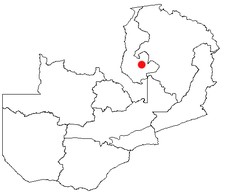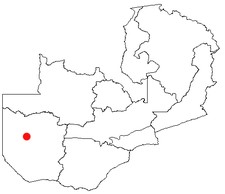Resource 2: A comparison of Samfya and Mongu
![]() Teacher resource for planning or adapting to use with pupils
Teacher resource for planning or adapting to use with pupils
Samfya

Samfya is a town located in the Zambian province of Luapula, and an administrative district. The town is located on the southwestern shore of Lake Bangweulu, on the longest stretch of well-defined shore of that lake (the northern, eastern and southern margins of which are marshy). Samfya has a few guesthouses and a number of white sandy beaches which are used for recreation, although the lake does have crocodiles.
In addition to local government offices and branches of national agencies, Samfya is a commercial and fishing centre, as well as a centre for transport by boat to islands and other areas of the lake. Its hinterland includes farms and some timber plantations.
Samfya district
Most of Samfya district is lake, swamp or floodplain. It covers Lake Bangweulu and the Bangweulu swamps, except for the northeast corner, which lies in Chilubi district of Northern Province. The only extensive dry land is along its western edge where it borders Milenge and Mansa districts. There are numerous inhabited islands in the lake and swamps, as well as peninsulas almost entirely surrounded by water, such as the Twingi peninsula.
Roads
Samfya is on a tarred road opened in 1983 to link the Luapula Province to the Great North Road at Serenje. This includes the longest bridge in Zambia, the Luapula Bridge in the far southeast corner of the district near where four districts meet: Samfya, Mpika, Serenje and the Congo Pedicle, part of DR Congo. Gravel roads also connect Samfya to Twingi, Kapalala and Lubwe.
Mongu

Mongu is a town in western Zambia, and the capital of Western Province, Zambia and Barotseland. It lies a few kilometres from the Zambezi River, to which it is connected by canals.
Mongu is semi desert and sandy. It takes about 6 to 8 hrs to drive to Mongu from the capital Lusaka. It lies by the Barotse Plains, which in the wet season are flooded by the Zambezi right up to the town. It is also home to a cathedral and a water tower, while the Litunga (Lozi ruler)'s summer and winter palaces lie in separate locations nearby. The winter palace is home to a museum, while the Kuomboka ceremony marks the court's transfer between them. Mongu is home to the Lozi (or Barotse) people, who speak a dialect of the (South African) Sotho language.
Among the several shopping places and social places, the town has a large market and an airport. Mongu Airport is mainly used by the Zambian Airforce and the United Nations to transport Angolan Refugees back to Angola. Mongu is known for basket and carpet weaving. It produces the best mango and fish in the country, especially the tiger fish. Mongu is also the major rice growing region of Zambia.
Adapted from original sources: Wikipedia, Website
Resource 1: Living in different communities



